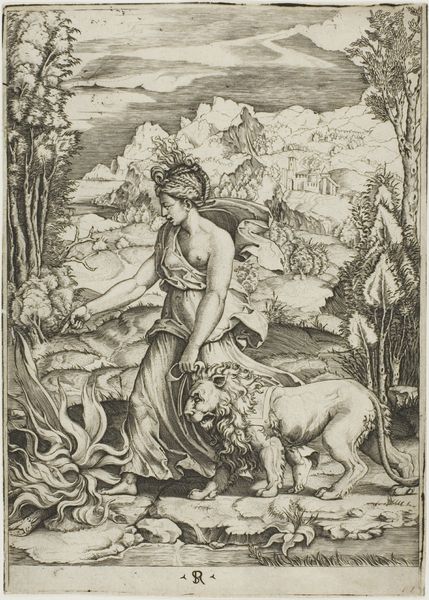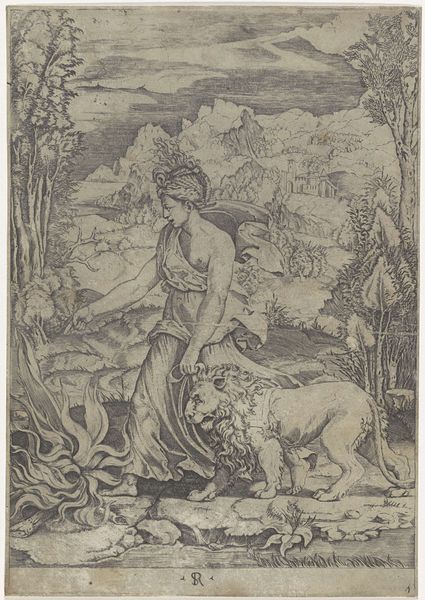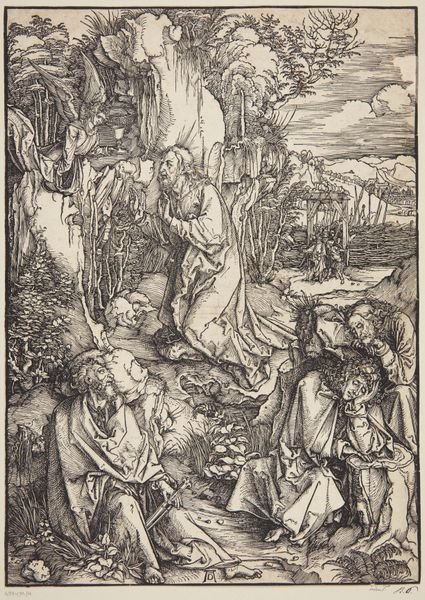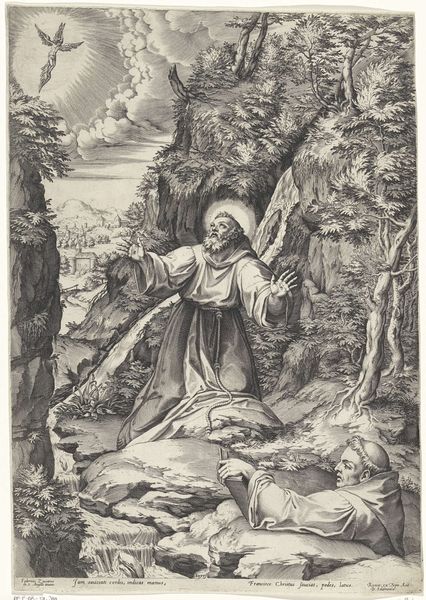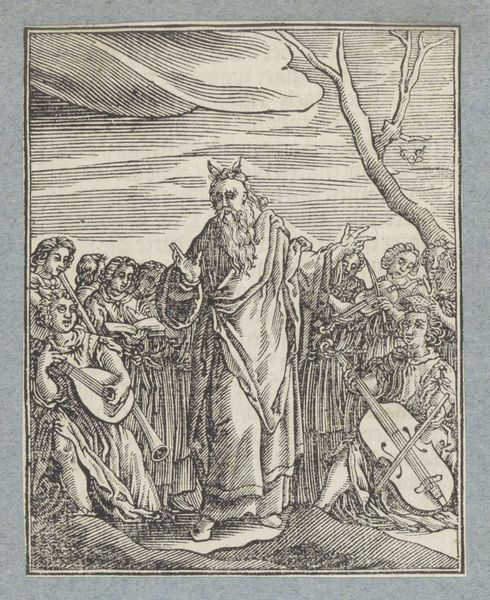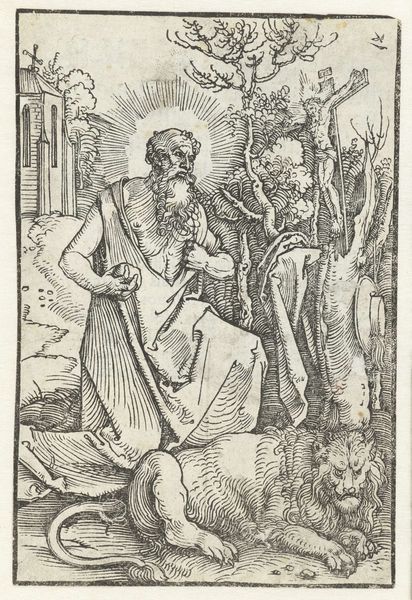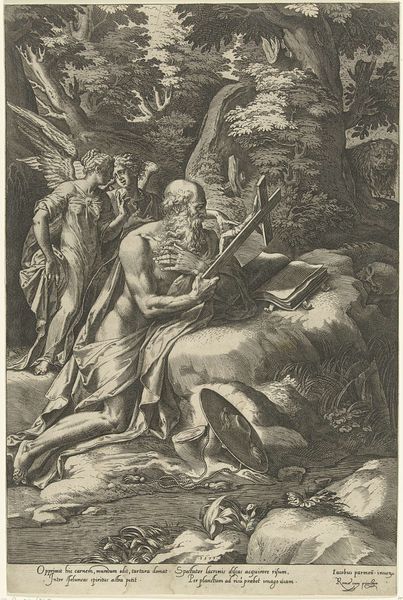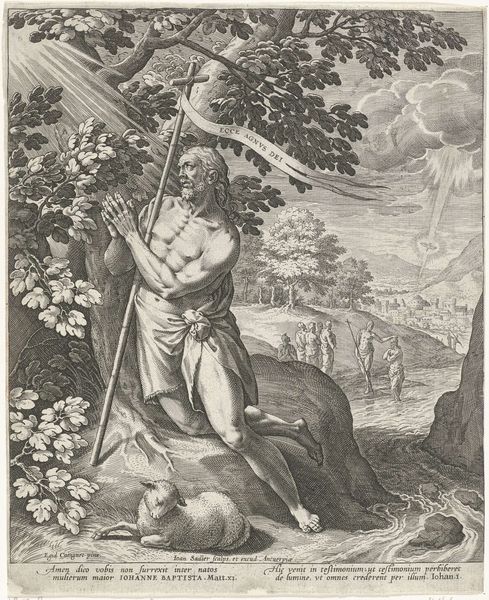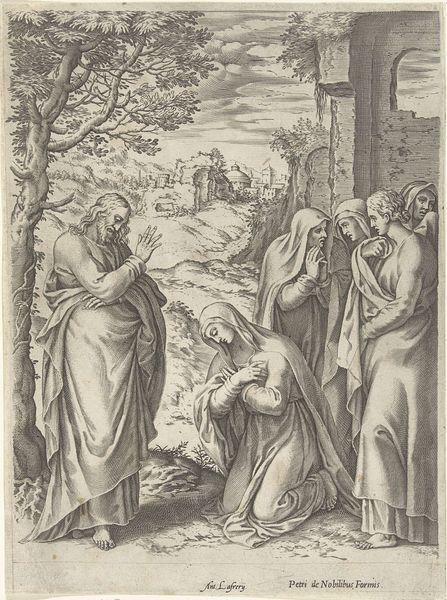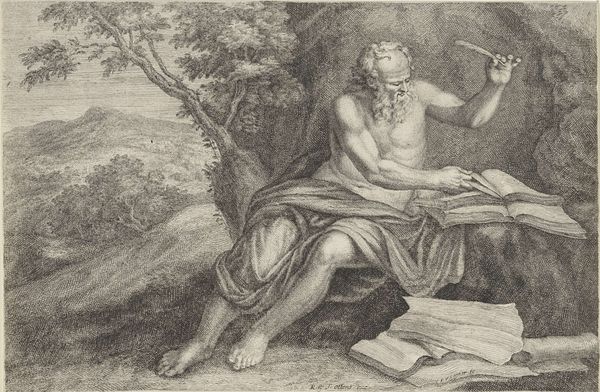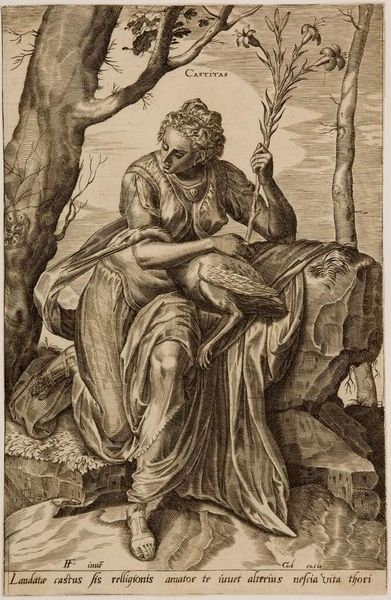
oil-paint
#
portrait
#
oil-paint
#
landscape
#
figuration
#
11_renaissance
#
oil painting
#
christianity
#
history-painting
#
northern-renaissance
#
christ
Copyright: Public domain
Curator: Let's turn our attention to Albrecht Altdorfer's oil on panel, "Penitent St. Jerome," created around 1507. A surprisingly intimate depiction, wouldn't you say? Editor: It is striking how he's placed Jerome so organically within that vibrant landscape. The composition immediately strikes me – a wizened, almost fragile figure set against such lush abundance. What's your initial take on its materiality, its production? Curator: Well, it's worth considering how panel paintings like this were made. Think of the preparation involved. The careful layering of gesso to create a smooth surface for the application of paint, and then, observe how Altdorfer exploits the oil medium to achieve luminosity in both the landscape and the figure's skin tones. The textures – the rough bark, the soft drapery, even the lion’s mane – all are so evocative, demanding an appreciation of craft and workshop practice. Editor: Yes, I see what you mean. And notice the figure of St. Jerome, he is so central. He is shown here in a moment of reflection and contemplation, having withdrawn from the world. Consider the symbolic weight of the objects that surround him: the skull, the book, and the lion, each telling a part of Jerome’s story. The skull symbolizes mortality; the book, his scholarly pursuits; and the lion represents the tamed animal, a reminder of the power of faith. Curator: The very inclusion of the lion, which represents so much strength, contrasts markedly with the humble material used – paint, painstakingly applied – which itself stands in stark relief to the wild landscape Jerome inhabits, almost dwarfed within nature’s forces. Editor: Absolutely. And beyond that, consider how the image reflects a specific cultural understanding of religious piety during the Renaissance. This is not just a portrait of a saint, but also a moral lesson on sacrifice and redemption, visually conveyed. Altdorfer evokes Jerome as a role model. Curator: Yes, and don't forget, too, that panel painting itself has a function, existing as both an aesthetic object and potentially, in this period, as an altarpiece or devotional object, playing its role in specific rituals and routines of Christian worship. Editor: So we are considering both art and artifact, bound by material circumstances, with symbolic importance deeply entrenched in visual and cultural traditions. That really shifts my perspective on this image. Curator: Indeed, seeing both the materials that constitute this scene alongside their encoded meaning makes for a far richer encounter with Altdorfer’s work, I think. Editor: I agree completely. It shows how layered interpretation reveals more about its moment in time, than either materials or symbolic value can show alone.
Comments
No comments
Be the first to comment and join the conversation on the ultimate creative platform.
